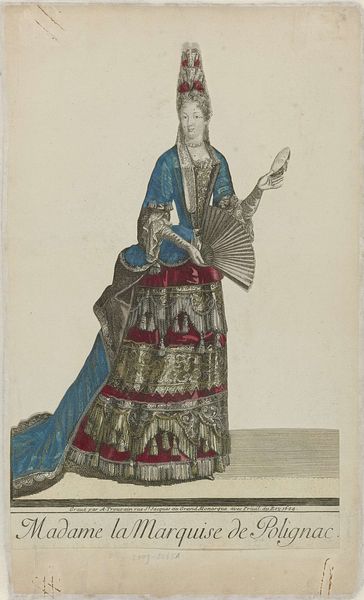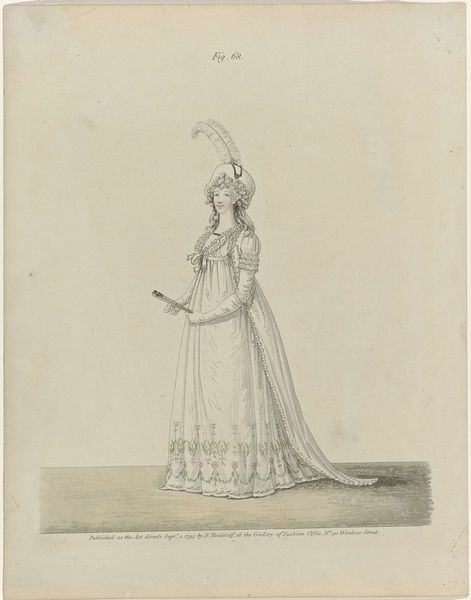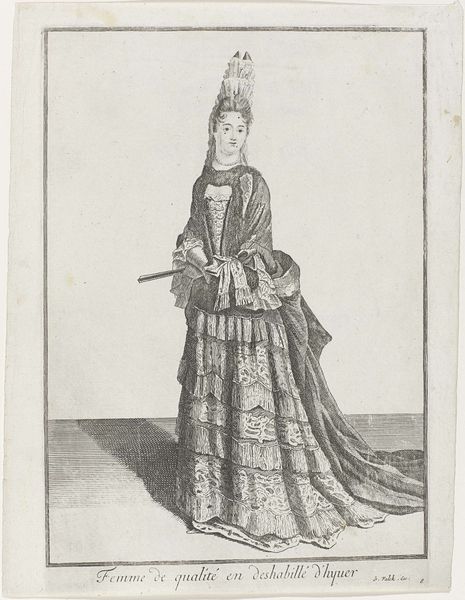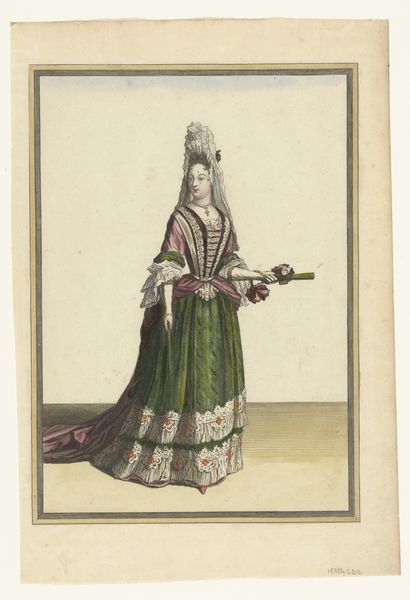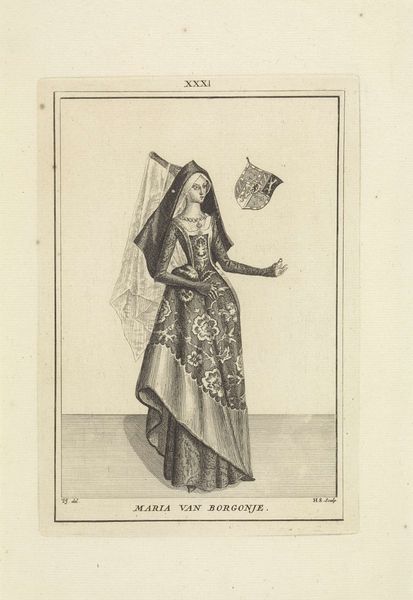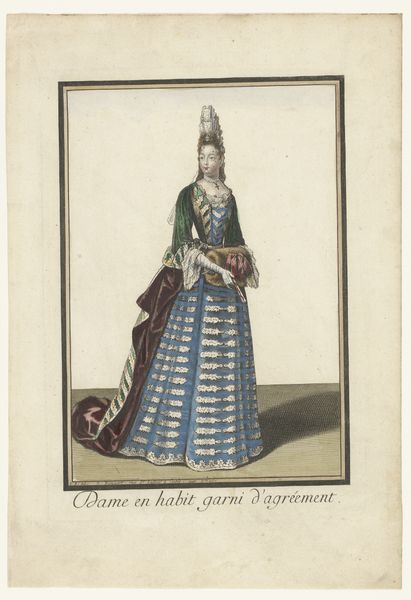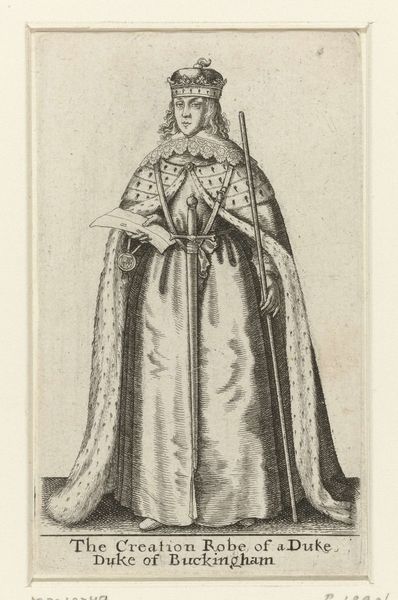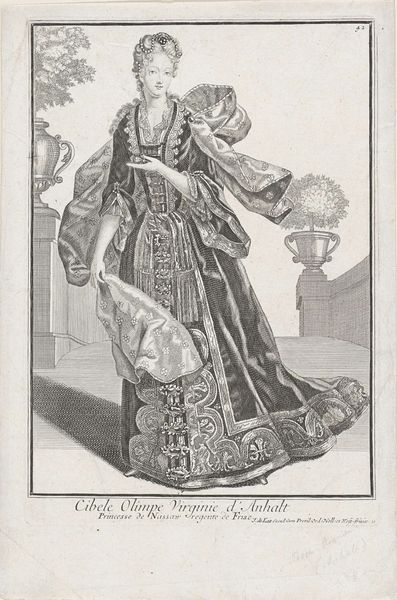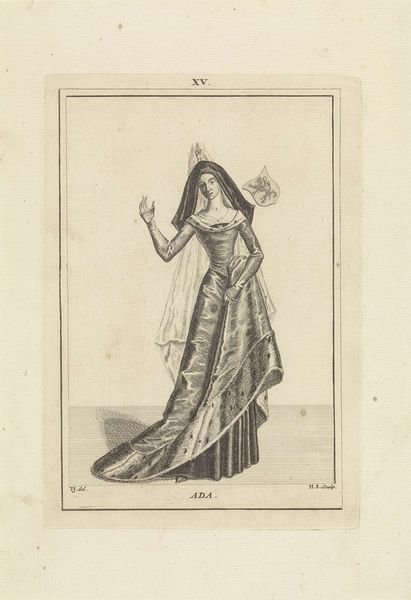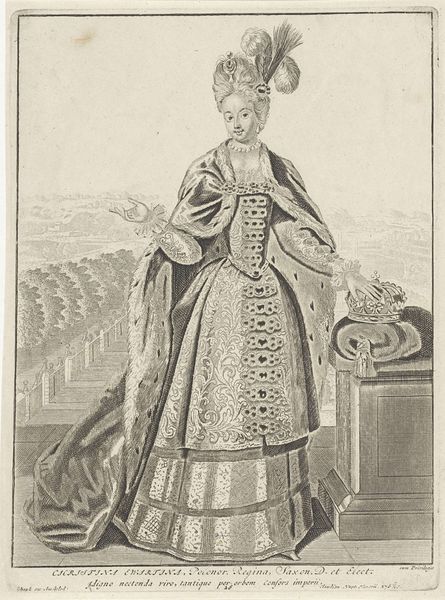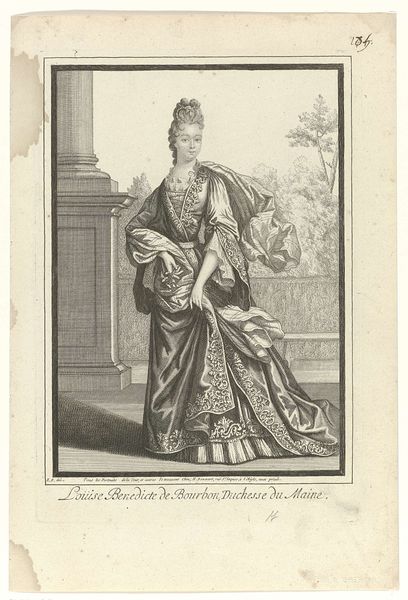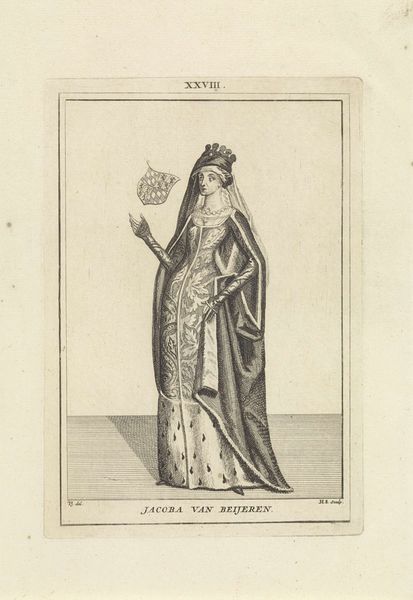
drawing, print, engraving
#
portrait
#
drawing
#
baroque
# print
#
figuration
#
line
#
dress
#
engraving
Dimensions: height 324 mm, width 196 mm
Copyright: Rijks Museum: Open Domain
Editor: So, this is an engraving, "Madame la Duchesse de Roquelaur en habit d'Esté", dating back to between 1695 and 1697. It resides in the Rijksmuseum and is labeled as Anonymous. I’m struck by the almost theatrical presentation of the Duchess; she's undeniably making a statement. What jumps out at you when you look at this? Curator: It’s fascinating to see how even in printed images like this, the performance of status is so deliberately constructed. Consider the 'habit d'esté' itself – summer attire. This isn't about practicality, but about display. How does the choice of representing her summer dress affect our understanding of the Duchess and the print’s social role? Editor: That's interesting. I hadn't considered it as more than just a seasonal choice. So, it's more about what it signifies? Curator: Precisely. Garments functioned as powerful indicators of rank and occasion within the complex social hierarchies of the late 17th century. The luxurious fabrics, the elaborate ornamentation… every element conveys wealth and belonging. Think about where prints like this might have been circulated. Editor: Well, I imagine amongst other wealthy individuals? A form of fashionable exchange, maybe? Curator: Exactly. It’s a visual language designed to be read by a specific audience. These images played a crucial role in shaping and reinforcing social distinctions. What does the uniformity of the printmaking medium – engraving – itself suggest about standardization of imagery? Editor: Hmm, a method to disseminate the idea of the aristocracy and status to a wider, albeit still elite, audience, through accessible and repeatable imagery? It's almost like propaganda, but for fashion! Curator: In a way, yes. It's about projecting and perpetuating a certain image of power and elegance, contributing to the cultural landscape and, indeed, the politics of imagery at the time. It's definitely given me something to consider about the role of prints in disseminating these concepts of social class. Editor: It makes you look at the engraving not just as a portrait but as a carefully constructed social statement, really thinking about its circulation and impact. I'll definitely look differently at similar prints from now on.
Comments
No comments
Be the first to comment and join the conversation on the ultimate creative platform.
